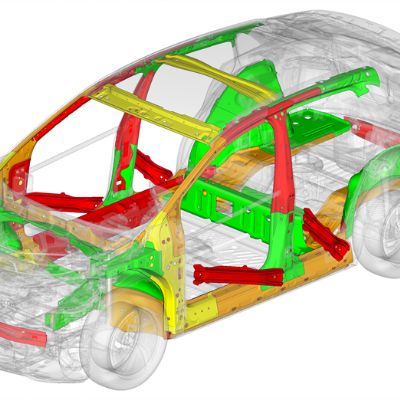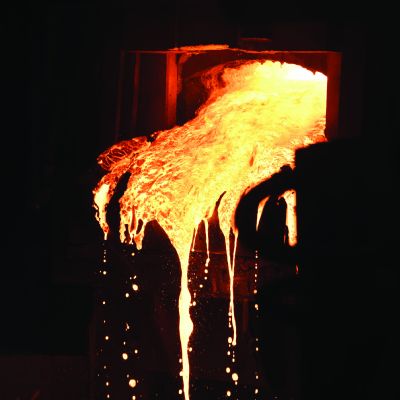If stampers and tool builders take a similar approach to advanced-high-strength-steel (AHSS) stamping processes, they could be facing catastrophic failures. The increased forces needed to form, pierce and trim these steels create significant problems for pressroom equipment and tooling. These include excessive tooling defections, damaging tipping-moments, and amplified vibrations and snapthrough forces that can shock and break the dies, and sometimes even the presses.
Stamping AHSS can affect the size, strength, power and configuration of every major piece of the press line, including coil-handling equipment, coil feed systems, straighteners and presses. Here are some things every stamper and die shop needs to know:
Because AHSS is harder and requires more stress to deform, additional servo-motor power and torque capability may be needed to pull the coil material through the straightener. Additional back tension between the coil-feed and straightening equipment may also be required due to the higher yield strength of the material in the loop as the material tries to push back against the straightener or the feed system.
AHSS, due to its higher yield strength, has a greater tendency to retain its coil set. This requires greater horsepower to straighten the material to an acceptable level of flatness. Straightening AHSS also may require larger-diameter rolls and wider roll spacing in order to work the stronger material more effectively. But increasing roll diameter and center distances on straighteners to accommodate high-strength steels limits the range of materials that can be straightened effectively.
For example, a straightener capable of processing 600-mm-wide, 10-mm-thick coils in mild steel may still straighten 1.5-mm-thick material successfully. But a straightener sized to run the same width and thickness of AHSS might only be able to straighten 2.5-mm- or 3.0-mm-thick mild steel. This limitation is primarily due to the larger rolls and broadly spaced centers that are necessary to run AHSS. The larger rolls, journals and broader center distances safeguard the straightener from damage caused by the higher stresses. Deeper roll penetration may also be required to remove coil set.
Cutting, blanking and piercing stresses all produce unloading forces in stamping presses, namely snap-through or reverse tonnage. Because AHSS requires greater stress to blank and pierce compared to HSLA or mild steel, it generates proportionally increased snapthrough forces. High-tensile snapthrough forces introduce large downward accelerations to the upper die half. These forces work to essentially separate the upper die from the bottom of the ram on every stroke. If the hydraulic die-clamping system or screw clamping system lacks sufficient clamping force, the upper die half could separate from the bottom of the ram on each stroke, causing fatigue to the upper-die mounting fasteners.
Because energy is expended with each press stroke, and this energy must be replaced, critical attention must focus on the size of the main drive motor (horsepower) and the rotational speed of the flywheel for AHSS applications. The main motor, with its electrical connection, is the only energy source for the press and it must have sufficient horsepower to supply the demands of the stamping operation. The motor must be sized properly in order to replace the increased energy that is being expended during each stroke of the press.
Assuming that AHSS die applications will create a “business as usual” condition for an existing press line can be very costly. AHSS stamping can easily push press-line performance requirements well beyond their originally designed capabilities. Company management must thoroughly comprehend these limitations before accepting any AHSS job; otherwise, the high physical stresses associated with AHSS stampings will pale in comparison to the emotional and financial stress awaiting the unsuspecting business owner. MF
Industry-Related Terms: Blank,
Blanking,
Center,
Die,
Form,
Forming,
Lines,
Penetration,
Piercing,
Ram,
Run,
Stroke,
Thickness,
TorqueView Glossary of Metalforming Terms Technologies: Coil and Sheet Handling, Materials, Tooling







 Webinar
Webinar
